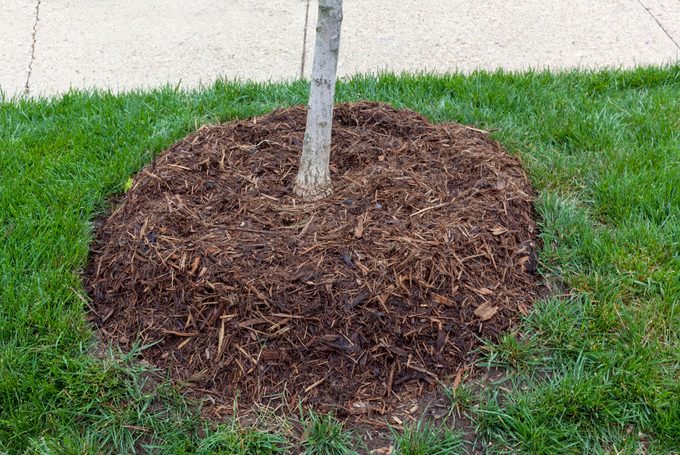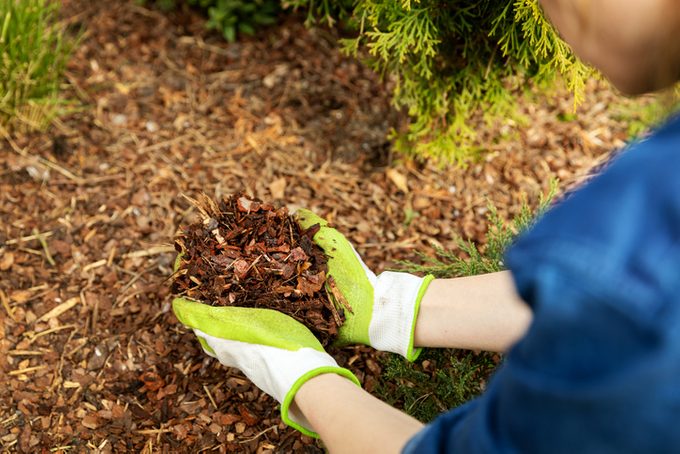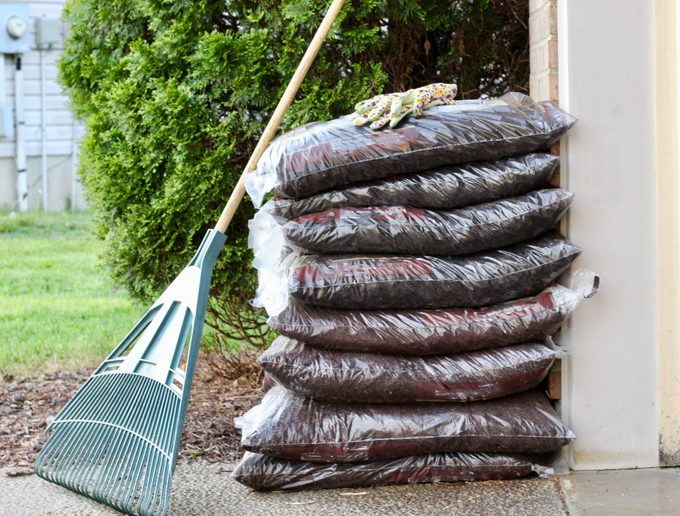Too much mulch can be a bad thing. Learn more about volcano mulching and other common mulch mistakes to avoid.

Stop Volcano Mulching — It’s Harmful to Your Trees

Mulch has many benefits for our gardens. Besides the aesthetic appeal, mulch helps slow weed growth, reduces water evaporation, and as it breaks down, organic mulch improves the soil. But too much mulch can be a problem, too. Read on to learn about volcano mulching and why it is harmful to trees.
What Is Volcano Mulching?

Some gardeners make the mistake of thinking if mulch is a good thing, additional mulch is better. Unfortunately they might be doing more harm than good. They mound a heaping pile of mulch into a cone or funnel shape around the trunk of a tree. This is known as volcano mulching, because the pile of mulch looks like the shape of a volcano.
Even though some professional landscapers still do this, it’s potentially harmful as it leads to bark rot and gives cover to rodents (mice, chipmunks and voles) that chew on bark.
Mulch applied more than 3 inches deep—even if not right up against the trunk—also harms trees by reducing the amount of oxygen reaching the roots.
How to Properly Apply Mulch

Evenly spread a layer of mulch over the soil around your plants, keeping it away from stems and tree trunks (leave some breathing room). The general rule is about 2 or 3 inches of mulch is sufficient for trees, shrubs and perennials.
Other Common Mulch Mistakes

- Keep wood chip mulch away from the foundation of your house and your siding. It can attract bugs such as termites and carpenter ants, or lead to moisture issues.
- Don’t use freshly cut grass clippings as mulch. Grass clippings may heat up as they decompose, burning your plants.
- Don’t rake and throw away your fall leaves. Instead, use a mower with a bag to collect them to use as mulch. Shredded leaves provide nutrient-rich organic matter to the soil.
- Avoid buying expensive bagged mulch when possible. Store-bought mulch has its place—but it’s a major expense when it comes to large beds. You can usually find mulch for free. Call a local tree service and ask if they give away wood chips or check with your municipality.
Types of Mulch to Use (and Avoid)

Use organic mulches when possible because they improve the soil as they break down. Keep in mind that organic mulches have to be replenished periodically, usually every two to three years.
Wood chips and bark are the most common types of mulch. Use them where you want to control weeds and improve the appearance of a plot, but where soil improvement isn’t as needed, such as around trees and shrubs. Mulches consisting of large pieces of bark will last longer and decompose more slowly.
Leaf mulch and evergreen needles break down faster and improve the soil better than traditional wood chip mulch.
Stone or gravel mulch has a nice decorative effect, but it will not benefit your soil or plants. You’ll need to place landscaping fabric down first. The fabric keeps the rocks from sinking into the soil and makes removal easier if you want to change out your mulch later.
Avoid inorganic rubber mulch. It won’t break down and may contain heavy metals.
Cocoa bean hull mulch is poisonous to pets, so choose something else if you have dogs.




















